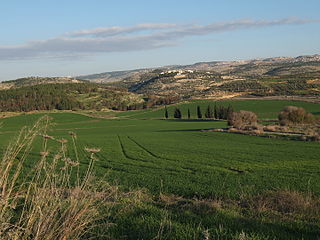 W
WThe Land of Israel is the traditional Jewish name for an area of indefinite geographical extension in the Southern Levant. Related biblical, religious and historical English terms include the Land of Canaan, the Promised Land, the Holy Land, and Palestine. The definitions of the limits of this territory vary between passages in the Hebrew Bible, with specific mentions in Genesis 15, Exodus 23, Numbers 34 and Ezekiel 47. Nine times elsewhere in the Bible, the settled land is referred as "from Dan to Beersheba", and three times it is referred as "from the entrance of Hamath unto the brook of Egypt".
 W
WAliyah is the immigration of Jews from the diaspora to the Land of Israel historically, which today includes the modern State of Israel. Also defined as "the act of going up"—that is, towards Jerusalem—"making aliyah" by moving to the Land of Israel is one of the most basic tenets of Zionism. The opposite action, emigration from the "Land of Israel", is referred to in Hebrew as yerida ("descent"). The State of Israel's Law of Return gives Jews, their children, and their grandchildren automatic rights regarding residency and Israeli citizenship.
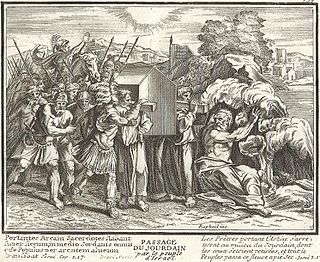 W
WYom HaAliyah, or Aliyah Day, is an Israeli national holiday celebrated annually according to the Jewish calendar on the tenth of the Hebrew month of Nisan to commemorate the Jewish people entering the Land of Israel as written in the Hebrew Bible, which happened on the tenth of the Hebrew month of Nisan. The holiday was also established to acknowledge Aliyah, immigration of Jews to the Jewish state, as a core value of the State of Israel, and honor the ongoing contributions of Olim, Jewish immigrants, to Israeli society. Yom HaAliyah is also observed in Israeli schools on the seventh of the Hebrew month of Cheshvan.
 W
WThe transformation of water into wine at the Marriage at Cana or Wedding at Cana is the first miracle attributed to Jesus in the Gospel of John. In the Gospel account, Jesus Christ, his mother and his disciples are invited to a wedding. When his mother notices that the wine has run out, Jesus delivers a sign of his divinity by turning water into wine at her request.
 W
WCanaan was a Semitic-speaking civilization and region in the Ancient Near East during the late 2nd millennium BC. The name "Canaan" appears throughout the Bible, where it corresponds to the Levant, in particular to the areas of the Southern Levant that provide the main setting of the narrative of the Bible: Phoenicia, Philistia, and the Land of Israel, among others.
 W
WChâteau Pèlerin, also known as Atlit Castle and Pilgrim Castle, is a Crusader fortress located near Atlit on the northern coast of Israel, about 13 kilometres (8.1 mi) south of Haifa.
 W
WChezib, also known as Achziv of Judah, is a biblical place-name associated with the birth of Judah's son, Shelah (Genesis 38:5), corresponding to the Achziv of the Book of Joshua (15:44), a town located in the low-lying hills of the plain of Judah, known as the Shefela. In I Chronicles 4:22, the town is rendered as Chozeba. The place is now a ruin.
 W
WDan is a city mentioned in the Hebrew Bible, described as the northernmost city of the Kingdom of Israel, and belonging to the tribe of Dan. The city is identified with a tell located in northern Israel known as Tel Dan in Hebrew, or Tell el-Qadi.
 W
WAccording to the Hebrew Bible, the Tribe of Ephraim was one of the tribes of Israel. The Tribe of Manasseh together with Ephraim formed the House of Joseph. It is one of the ten lost tribes. The etymology of the name is disputed.
 W
WHaim Farhi, was an adviser to the governors of the Galilee in the days of the Ottoman Empire. Among the Jews he was known as Hakham Haim, because of his Talmudic learning.
 W
WJames Finn (1806–1872) was a British Consul in Jerusalem, in the then Ottoman Empire (1846–1863). He arrived in 1845 with his wife Elizabeth Anne Finn. Finn was a devout Christian, who belonged to the London Society for Promoting Christianity Amongst the Jews, but who did not engage in missionary work during his years in Jerusalem.
 W
WFrom Dan to Beersheba is a biblical phrase used nine times in the Hebrew Bible to refer to the settled areas of the Tribes of Israel between Dan in the North and Beersheba in the South. The term contributed to the position that was used by British politicians during negotiation of the British Mandate for Palestine following World War I.
 W
WGalilee is a region located in northern Israel and southern Lebanon. Galilee traditionally refers to the mountainous part, divided into Upper Galilee and Lower Galilee.
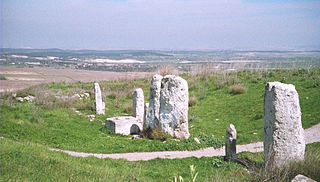 W
WGezer, or Tel Gezer, in Arabic: تل الجزر – Tell Jezar or Tell el-Jezari, the site of the abandoned Arab village of Abu Shusheh, is an archaeological site in the foothills of the Judaean Mountains at the border of the Shfela region roughly midway between Jerusalem and Tel Aviv. It is now an Israeli national park. In the Hebrew Bible, Gezer is associated with Joshua and Solomon.
 W
WGreater Israel is an expression, with several different biblical and political meanings over time. It is often used, in an irredentist fashion, to refer to the historic or desired borders of Israel.
 W
WTel Hazor, also Chatsôr, translated in LXX as Hasōr, identified at Tell Waqqas / Tell Qedah el-Gul, is an archaeological tell at the site of ancient Hazor, located in Israel, Upper Galilee, north of the Sea of Galilee, in the northern Korazim Plateau. In the Middle Bronze Age and the Israelite period, Hazor was the largest fortified city in the country and one of the most important in the Fertile Crescent. It maintained commercial ties with Babylon and Syria, and imported large quantities of tin for the bronze industry. In the Book of Joshua, Hazor is described as “the head of all those kingdoms”.
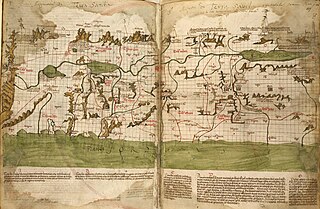 W
WThe Holy Land is an area roughly located between the Mediterranean Sea and the Eastern Bank of the Jordan River. Traditionally, it is synonymous both with the biblical Land of Israel and with the region of Palestine. The term "Holy Land" usually refers to a territory roughly corresponding to the modern State of Israel, the Palestinian territories, western Jordan, and parts of southern Lebanon and southwestern Syria. Jews, Christians, and Muslims regard it as holy.
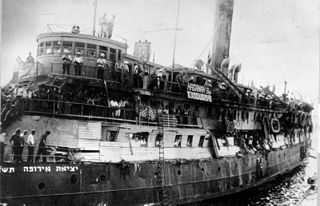 W
WA homeland for the Jewish people is an idea rooted in Jewish history, religion, and culture. The Jewish aspiration to return to Zion, generally associated with divine redemption, has suffused Jewish religious thought since the destruction of the First Temple and the Babylonian exile.
 W
WIncense Route – Desert Cities in the Negev is a World Heritage-designated area near the end of the Incense Route in the Negev, southern Israel, which connected Arabia to the Mediterranean in the Hellenistic-Roman period, proclaimed as being of outstanding universal value by UNESCO in 2005. The trade led to the development of ancient towns, forts and caravanserai en route, apart from agricultural development.
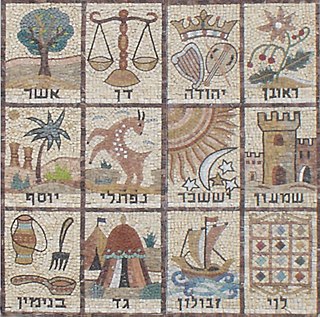 W
WThe Israelites were a confederation of Iron Age Semitic-speaking tribes of the ancient Near East, who inhabited a part of Canaan during the tribal and monarchic periods.
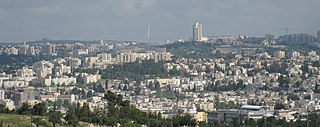 W
WJerusalem is a city in Western Asia, on a plateau in the Judaean Mountains between the Mediterranean and the Dead Sea. It is one of the oldest cities in the world, and is considered holy to the three major Abrahamic religions—Judaism, Christianity, and Islam. Both Israelis and Palestinians claim Jerusalem as their capital, as Israel maintains its primary governmental institutions there and the State of Palestine ultimately foresees it as its seat of power. Neither claim, however, is widely recognized internationally.
 W
WSince the 10th century BCE Jerusalem has been the holiest city, focus and spiritual center of the Jews. Jerusalem has long been embedded into Jewish religious consciousness and Jews have always studied and personalized the struggle by King David to capture Jerusalem and his desire to build the Holy Temple there, as described in the Book of Samuel and the Book of Psalms. Many of King David's yearnings about Jerusalem have been adapted into popular prayers and songs. Jews believe that in the future the rebuilt Temple in Jerusalem will become the center of worship and instruction for all mankind and consequently Jerusalem will become the spiritual center of the world.
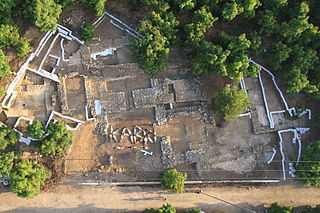 W
WTel Kabri, or Tell al-Qahweh, is an archaeological tell containing one of the largest Middle Bronze Age Canaanite palaces in Israel, and the largest such palace excavated as of 2014. Kabri is named for the abundance of its perennial springs the presence of which has led to the site's occupation and use as a water source from the Pottery Neolithic (PN) period to the present day. Located in the Western Upper Galilee, the site was at the height of its power in the Middle Bronze, controlling much of the surrounding region. Kabri declined as a local power at the end of the Middle Bronze, but the site continued to be occupied at times, on a much reduced level, up until the 1948 Arab-Israeli War.
 W
WThe Mosaic of Reḥob, also known as the Tel Rehov inscription and Baraita of the Boundaries, is a late 3rd–6th century CE mosaic discovered in 1973, inlaid in the floor of the foyer or narthex of an ancient synagogue near Tel Rehov, 4.5 kilometers (2.8 mi) south of Beit She'an and about 6.5 kilometres (4.0 mi) west of the Jordan River, containing the longest written text hitherto discovered in any mosaic in the Land of Israel, and also the oldest known Talmudic text.
 W
WThe Mount of Beatitudes is a hill in northern Israel, in the Korazim Plateau. It is where Jesus is believed to have delivered the Sermon on the Mount.
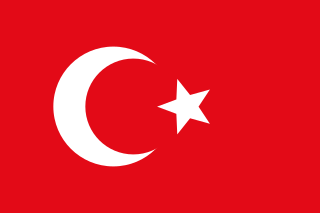 W
WThe Mutasarrifate of Jerusalem, also known as the Sanjak of Jerusalem, was an Ottoman district with special administrative status established in 1872. The district encompassed Jerusalem as well as Bethlehem, Hebron, Jaffa, Gaza and Beersheba. During the late Ottoman period, the Mutasarrifate of Jerusalem, together with the Sanjak of Nablus and Sanjak of Akka (Acre), formed the region that was commonly referred to as "Palestine". It was the 7th most heavily populated region of the Ottoman Empire's 36 provinces.
 W
WNabi Shuʿayb is an Islamic and Druze religious prophet, traditionally identified with the biblical Jethro, whose possible shrine/tomb is believed to be located near Kfar Zeitim, not far from Tiberias, Israel. The identification of Shuʿayb with Jethro, however, is a Druze tradition rather than historical fact. Prophet Shuʿayb is the 14th prophet while Islamic beliefs regard Shu'ayb as the 13th prophet.
 W
WThe Nebi Akasha Mosque, also Okasha mosque or Ukasha mosque, is a historic mosque and maqam located in Jerusalem.
 W
WThe Mount of Olives or Mount Olivet is a mountain ridge east of and adjacent to Jerusalem's Old City. It is named for the olive groves that once covered its slopes. The southern part of the mount was the Silwan necropolis, attributed to the ancient Judean kingdom. The mount has been used as a Jewish cemetery for over 3,000 years and holds approximately 150,000 graves, making it central in the tradition of Jewish cemeteries.
 W
WThe Onomasticon compiled by Eusebius of Caesarea is a directory of place names, or "gazetteer", a primary source that provides historical geographers with a contemporary knowledge of early 4th-century Palestine and Transjordan. It sits uneasily between the ancient genres of geography and lexicography, taking elements from both but serving as a member of neither. It is, according to many, the most important book for the study of Palestine in the Roman period.
 W
WThe Promised Land is the land which, according to the Tanakh, God promised and subsequently gave to Abraham and to his descendants. In modern contexts the phrase "Promised Land" expresses an image and idea related both to the restored homeland for the Jewish people and to salvation and liberation.
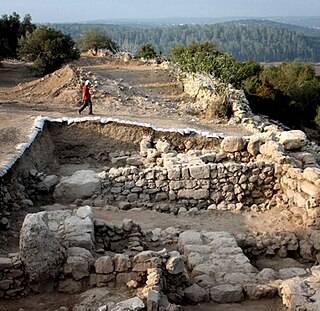 W
WKhirbet Qeiyafa, also known as Elah Fortress and in Hebrew as Hirbet Kaifeh, is the site of an ancient fortress city overlooking the Elah Valley and dated to the first half of the 10th century BCE. The ruins of the fortress were uncovered in 2007, near the Israeli city of Beit Shemesh, 30 km (20 mi) from Jerusalem. It covers nearly 2.5 ha and is encircled by a 700-meter-long (2,300 ft) city wall constructed of stones weighing up to eight tons each. Excavations at site continued in subsequent years. A number of archaeologists, mainly the two excavators, Yosef Garfinkel and Saar Ganor, have claimed that it might be one of two biblical cities, either Sha'arayim, whose name they interpret as "Two Gates", because of the two gates discovered on the site, or Neta'im; and that the large structure at the center is an administrative building dating to the reign of King David, where he might have lodged at some point. This is based on their conclusions that the site dates to the early Iron IIA, ca. 1025–975 BCE, a range which includes the biblical date for the biblical Kingdom of David. Others suggest it might represent either a North Israelite, Philistine, or Canaanite fortress, a claim rejected by the archaeological team that excavated the site. The team's conclusion that Khirbet Qeiyafa was a fortress of King David has been criticised by some scholars, but has been validated by the Israel Antiquities Authority (IAA).
 W
WThe return to Zion refers to the event in the biblical books of Ezra–Nehemiah in which the Jews returned to the Land of Israel from the Babylonian exile following the decree by the emperor Cyrus the Great, the conqueror of the Neo-Babylonian Empire in 539 BCE, also known as Cyrus's edict.
 W
WSamaria is a historical and biblical name used for the central region of the ancient Land of Israel, bordered by Galilee to the north and Judaea to the south. For the beginning of the Common Era, Josephus set the Mediterranean Sea as its limit to the west, and the Jordan River as its limit to the east. Its territory largely corresponds to the biblical allotments of the tribe of Ephraim and the western half of Manasseh; after the death of Solomon and the splitting-up of his empire into the southern Kingdom of Judah and the northern Kingdom of Israel, this territory constituted the southern part of the Kingdom of Israel. The border between Samaria and Judea is set at the latitude of Ramallah.
 W
WThe Seven Species are seven agricultural products - two grains and five fruits - which are listed in the Hebrew Bible as being special products of the Land of Israel.
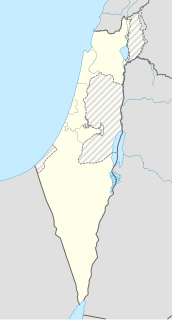 W
WTel Shikmona, also spelt Sycamine, is an ancient tell (mound) situated near the sea coast in the modern city of Haifa, Israel, just south of the Israeli National Institute of Oceanography.
 W
WShimon bar Yochai, also known by his acronym Rashbi, was a 2nd-century tannaitic sage in ancient Judea, said to be active after the destruction of the Second Temple in 70 CE. He was one of the most eminent disciples of Rabbi Akiva, and attributed by many Orthodox Jews with the authorship of the Zohar, the chief work of Kabbalah.
 W
WThe Sidna 'Ali Mosque is a mosque located in the depopulated village of Al-Haram on the beach in the northern part of Herzliya in Israel. It served, as of 1998, as both a mosque and a religious school.
 W
WThe Siege of Jebus is a siege described in biblical passages as having occurred when Israelites under King David of Israel besieged and conquered the Canaanite city of Jerusalem, then known as Jebus. The Israelites gained access by a surprise assault, making Jebus the capital of Israel under the new name, City of David.
 W
WTel Abel Beth Maacah, Arabic name: Tell Abil el-Qameḥ, is a large archaeological site consisting of a mound with a small upper northern section and a large lower southern one, connected by a saddle. It is located on the northern border of present-day Israel, about 2 km south of the town of Metulla and about 6.5 km west of Tel Dan.
 W
WThe Tel Dan Stele is a fragmentary stele containing a Canaanite inscription, discovered in 1993 in Tel-Dan by Gila Cook, a member of an archaeological team lead by Avraham Biran, the pieces having been used to construct an ancient stone wall that survived into modern times. The stele is in several pieces and contains several lines of Aramaic, closely related to Hebrew and historically a common language among Jews. The surviving inscription, which dates to 9th century BCE, details that an individual killed Jehoram, the son of Ahab, king of Israel and the king of the house of David. These writings corroborate passages from the Bible, as the Second Book of Kings mentions that Jehoram, also Joram, is the son of an Israelite king, Ahab, by his Phoenician wife, Jezebel. Applying a Biblical viewpoint to the inscription, the likely candidate for having erected the stele is Hazael, an Aramean king who is mentioned in Second Book of Kings as having conquered the Land of Israel, though he was unable to take Jerusalem. The stele is currently on display at the Israel Museum, and is known as KAI 310.
 W
WThe Temples of Mount Hermon are around thirty Roman shrines and Roman temples that are dispersed around the slopes of Mount Hermon in Lebanon, Israel and Syria. A few temples are built on former buildings of the Phoenician & Hellenistic era, but nearly all are considered to be of Roman construction and were largely abandoned during the persecution of pagans in the late Roman Empire.
 W
WTransjordan is an area of land in the Southern Levant lying east of the Jordan River valley. It is also alternatively called Gilead.
 W
WAccording to the Torah, the Tribe of Benjamin was one of the Twelve Tribes of Israel. The tribe was descended from Benjamin, the youngest son of the patriarch Jacob and his wife Rachel. In the Samaritan Pentateuch the name appears as Binyamīm.
 W
WThe Valley of Elah or Ella Valley, called in Arabic: وادي السنط, Wadi es-Sunt, is a long, shallow valley in Israel and the West Bank best known as the place described in the Old Testament where the Israelites were encamped when David fought Goliath. It is home to several important archaeological sites, including those identified as the ancient towns of Azekah and Socho (17:1). Rising up from the valley on its extreme southeast end lies the hilltop ruin Adullam, and on its north lie the ruins of the ancient fortress city of Khirbet Qeiyafa.
 W
WZionism is an ideology and nationalist movement that espouses the establishment of, and support for a Jewish state centered in the area roughly corresponding to Canaan, the Holy Land, the region of Palestine or Eretz Israel on the basis of a long Jewish connection and attachment to that land.